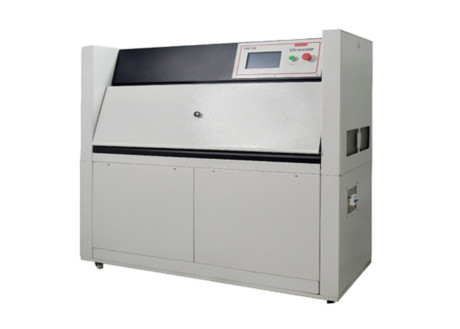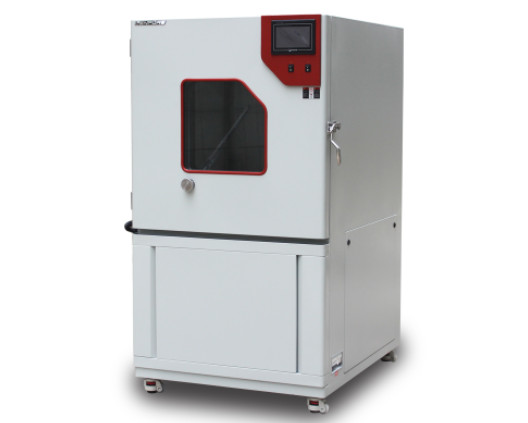10 Questions You Should Clarify About Aging Testers
The UV Aging Tester can perform alternating UV and humidity cycling aging tests on materials to reproduce damage caused by sunlight, rain and dew. In a matter of days or weeks, UV sunlight and humidity can cause tens of millions of dollars in material damage each year. It is possible to reproduce damage caused by months or years of being outdoors.
UV aging is one of the aging tests that are often done on textiles, industrial fabrics, plastics, rubber, coatings and other products. QINSUN introduces 5 Doubts You Should Clarify About Aging Tester:
1. What are the test standards for UV aging?
For different product test standards, the commonly used test standards are: ASTMG154/G53 non-metallic materials fluorescent UV lamp exposure test operation; ASTMD4329 plastic fluorescent UV exposure test; ASTMD4587 paint aging test (ultraviolet aging); AATCC186 weather resistance: ultraviolet and humidity exposure; ISO4892-3:2006 Laboratory Light Source Exposure - Fluorescent UV Lamp; ISO11507 Coating Exposure to Fluorescent UV Lamp and Water; SAEJ2020 Automotive Exterior Materials UV Rapid Aging Test; GB/T16422.3 UV Aging Test Standard.
2. How many hours does it take to do UV testing in the laboratory after the product has been used outdoors for ten years?
Due to the complicated external natural environment, the accelerated aging test done in the laboratory only simulates and accelerates the main factors such as temperature, irradiance, moisture, etc., and cannot fully simulate all the factors in nature. Therefore, the real product service life and laboratory test time are different. There is no exact correspondence between them, and only a reference can be given. Some third-party testing companies or institutions that often produce such products may have some experience values for reference.

3. How to choose different types of lamps in the UV accelerated aging test standard?
Usually UV-A type lamps include 315~400nm light, and this part of the light is the main area that causes polymer aging. The UV-B type tube includes light of 280~315nm, and the light in this region includes the shortest ultraviolet light that can reach the surface of the earth.
4. What are the commonly used lamp types in the standard of UV aging?
UVA--340: widely used to simulate outdoor natural aging, mostly used for comparative testing of different formulations, recommended for testing mostly plastics, textiles, coatings, pigments and UV stabilizers.
UVB--313: Widely used in the physical room screening of automotive weathering paints, the best for QC and R&D, and recommended for testing of durable materials (such as roofing materials, some exterior coatings, etc.).
UVA--351: commonly used to simulate the aging of sunlight through window glass, recommended for some automotive interior parts, textiles, inks and other tests.
In addition, the light aging test is a common test in the laboratory, which can quickly obtain the light aging resistance of the product. However, misunderstandings are often encountered in the light aging test, and there are mainly the following five common misunderstandings.

Myth 1: Any form of light aging is good
The truth is that wrong aging patterns are poor results. Accelerated testing is not advisable if it cannot reproduce the burn-in pattern of real-world usage or outdoor testing. For example, if a coating typically shows moderate chalking outdoors but severe cracking in accelerated testing, indicating a different aging mechanism, the test results are meaningless. The accelerated test chamber must produce the same type of weathering as the outdoor test.
Myth 2: Accelerated testing is 100% repeatable
The truth is that accelerated tests, like other tests, change. In a real accelerated aging test, even the best-controlled test conditions, the test results can vary widely. Repeat testing of the same device and reproducibility testing between laboratories can vary widely. The ASTM G03 subcommittee conducted an important comparative test in the 1990s and found that there were differences as large as 30% between the test results of several devices. Doing it right will make the difference smaller.
Myth 3: Outdoor light aging takes 5 years to get useful data
In fact, outdoor testing can yield useful data within 12 months. It may take 5 years to get a 5-year aging effect, but many useful data may be obtained in the first 12 months of exposure, such as distinguishing between good and poor quality materials. The fact is that with the right trial design and extensive evaluation, meaningful data can be obtained that can greatly increase the confidence of the accelerated test data.
Myth 4: Grade data is invalid
The truth is that rank data can be very useful if applied correctly. There is a saying that non-quantitative statistics, such as sorting, are useless because they do not use persuasive techniques. But when applied correctly, grade data can be used to prove many conjectures in burn-in testing. Numerical ratings derived from visual assessments are very useful.
Myth 5: Burn-in test data is absolute
The truth is that a single test will not give the desired correlation. There are many materials testing methods that require exposure of a single test sample and set a pass or fail boundary. For example, the color of the sample changes, and the △E* reaches 3.0 as the evaluation standard, then if the value is 2.9, the sample is qualified, and if it is 3.1, the sample is unqualified. However, there are also differences between colorimeters that render comparisons between color changes with ΔE* less than 1 meaningless. Generally, the visual resolution will not be better than △E*1.0.
QINSUN is an aging test equipment export company integrating R&D and sales,More Guidance For Uv Aging Test Chamber, please continue to pay attention to the QINSUN test!
Related test products: Xenon lamp aging test chamber / Economic Salt Spray Tester / Ozone aging chamber
2022-06-02 11:04
- Related News
The importance of battery internal resistance testing in the battery manufacturi
Application and structural principle of high and low temperature test chamber
Application of Small Coating Machine in Polyimide Slurry
Principles and selection methods of laboratory incubators
Evaluation of Moisture Absorption and Rapid Drying Performance of Textiles by Na
Liquid Moisture Management Tester
Paper ring compression strength tester standards
